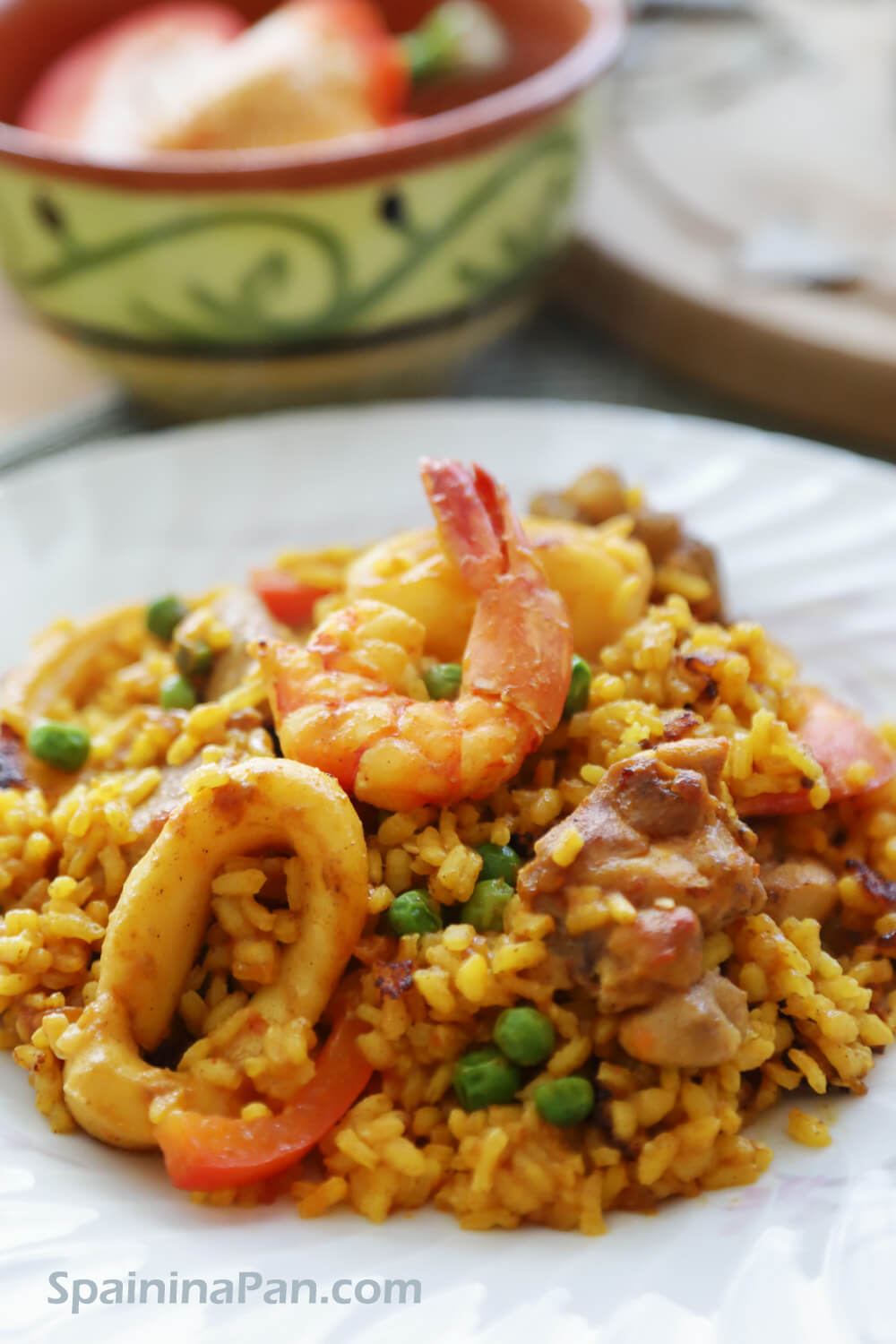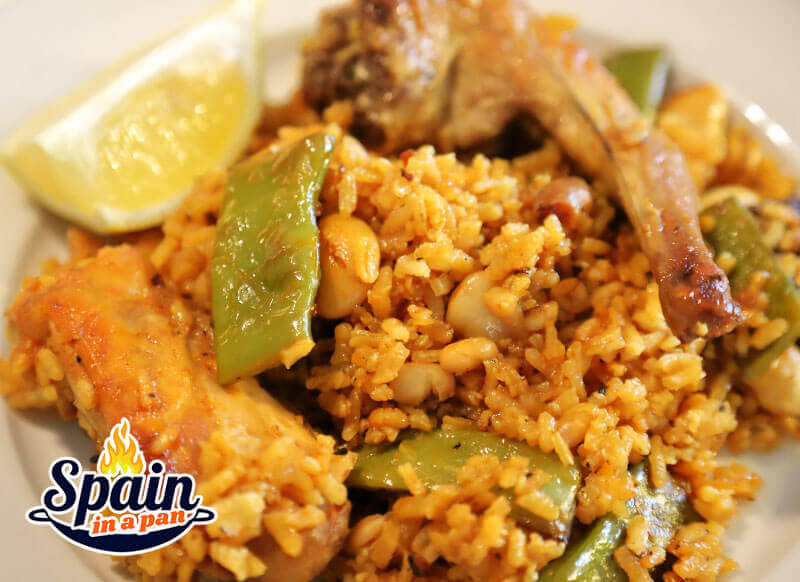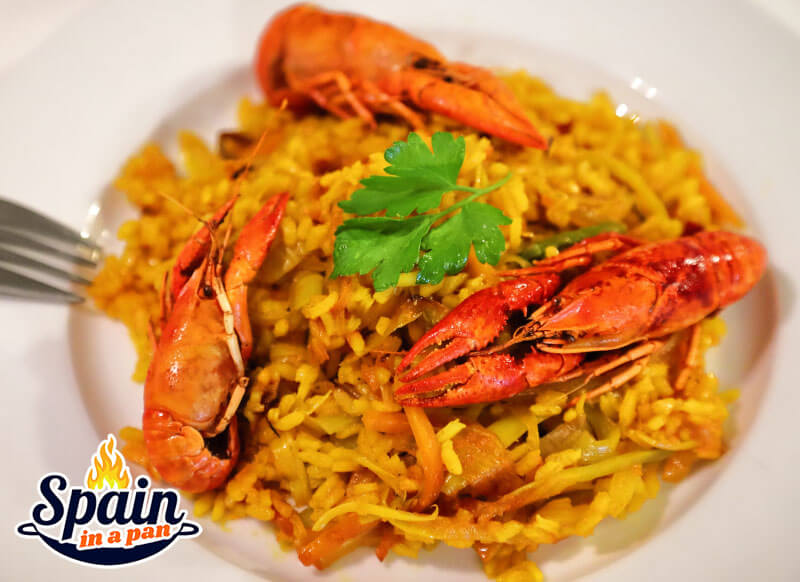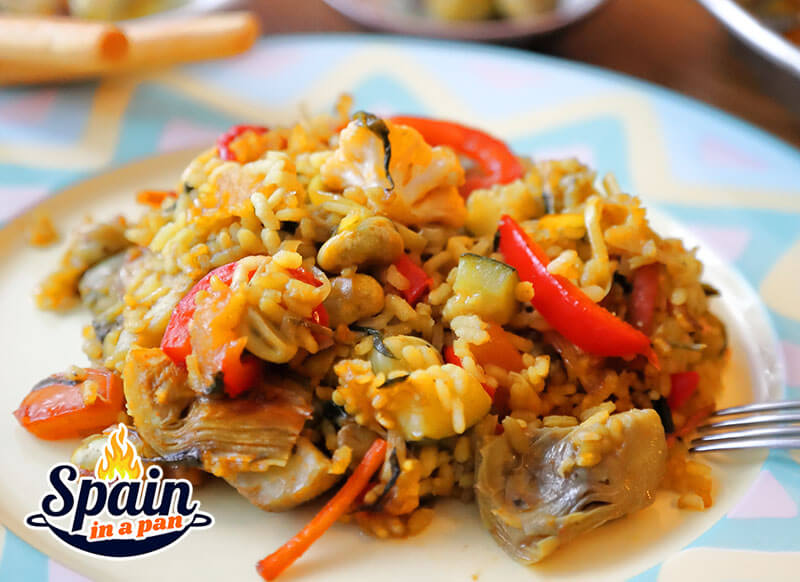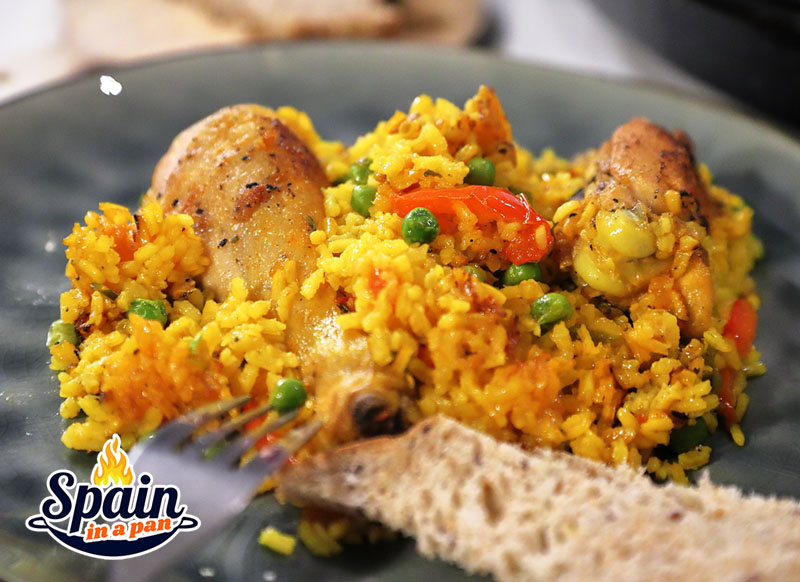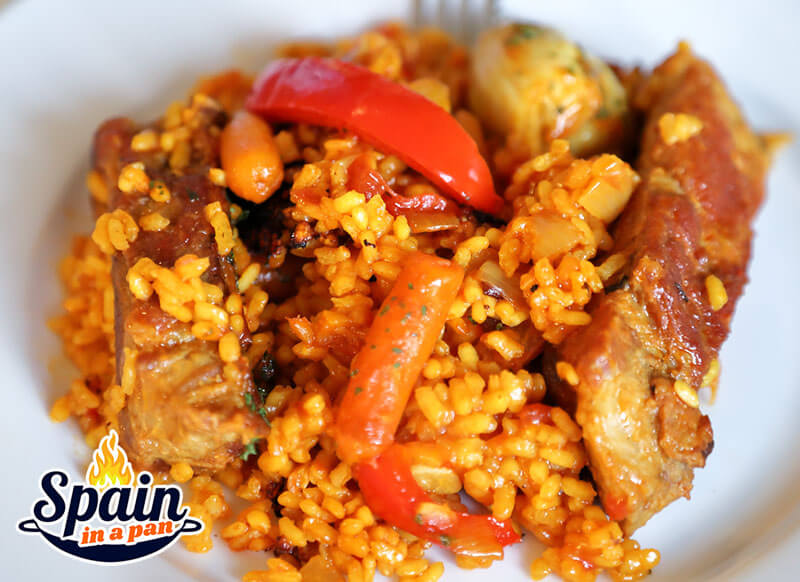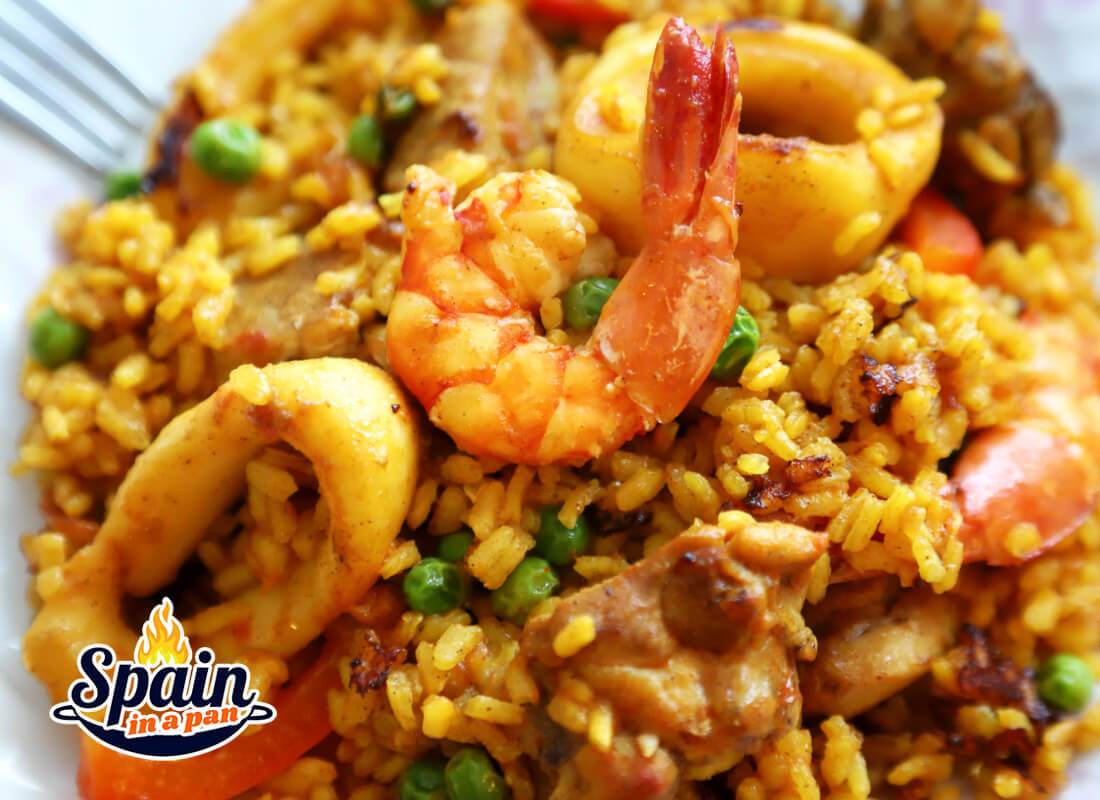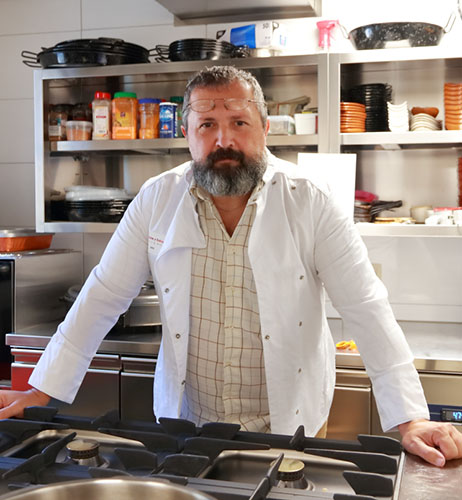- HOME
- Paella Recipes
- Paella Mixta
Authentic Paella Mixta Recipe | Seafood & Meat Spanish Classic
(Paella Mixta)
By Edu Valor / Author - Spanish Chef
The paella mixta recipe is one of the most popular twists on the traditional paella—and for good reason. It brings together the best of both worlds: seafood and meat.
You’ll find countless variations out there, often using a mix of chicken, clams, shrimp, rabbit, mussels, pork, or squid. And honestly, as long as you’ve got that surf-and-turf combo, you’re in mixta territory.
What Is Paella Mixta, Really?
Some folks say paella mixta was created for tourists—an easy way to give them a taste of everything Spain has to offer, from the sea and the land. It makes sense. It’s a modern adaptation, and it's definitely a crowd-pleaser (I'm a fan too).
Traditional paellas often stick to one or two protein sources. In contrast, the mixta often throws in three or more, making it more like a celebration on a plate. That’s part of what makes it so satisfying.
Let's Make the Real Paella Mixta Recipe!
Ingredients for 4 Servings
Preparation: 10-15 minutes
Cooking: 18 minutes for the Bomba rice, total 45-50 minutes.
*Measurements in metric and USA Imperial system. For British/Canadian measurements please use the metric conversion calculator.
Using a different rice may change the cooking time. The info is usually on the packaging. Make sure the pan is level.
- 1 L/4 cups fish bouillon (or homemade fish stock)
- 350 g/12.5 oz round-grain rice (such as Bomba, Calasparra, etc...)
- ½ red bell pepper, cut into short strips
- 2 medium red tomatoes, grated or finely chopped
- 8 large shrimp
- 150 g/5.5 oz calamari rings (or diced)
- 150 g/5.5 oz chicken, diced
- 150 g/5.5 pork, diced
- 80 g/3 oz green peas
- 2 tbsp smoked paprika (Pimentón de la Vera or other)
- 4 garlic cloves, minced
- 6–7 saffron strands (or ½ tsp yellow food coloring)
- Salt and pepper, to taste
- 6–7 tbsp olive oil
-
Chopped parsley, for garnish (optional)
Instructions
- Prepare the shrimp: Peel the shrimp, leaving the tips of the tails intact. Remove the intestinal vein from the back. Reserve the shells and heads.
- Enhance the broth: Bring the fish bouillon to a gentle boil. Add the reserved shrimp shells and heads. Simmer for 5 minutes, then set aside.
- Sauté the shrimp: Heat 6 tablespoons of olive oil in a wide pan over medium-high heat. Add the shrimp and cook for 1 minute per side. Remove and set aside.
- Cook the meat and calamari: In the same pan, add the pork, chicken, and calamari. Cook for 10–12 minutes, or until nicely browned. Season with salt and pepper, then add the minced garlic. Stir a few times.
- Add paprika and tomatoes: Reduce the heat to low, add the smoked paprika, and stir quickly to prevent burning. Immediately add the grated tomatoes.
- Sauté the sofrito: Increase the heat to medium and cook until the tomato juice has fully evaporated, stirring occasionally.
- Strain and season the broth: Meanwhile, strain the fish broth to remove the shrimp shells and heads. Add the saffron strands (or food coloring) to the broth and keep warm.
- Add broth and rice: Pour the flavored broth into the pan and stir to combine. Taste and adjust seasoning if needed. Bring to a boil, then add the rice and spread it evenly with a spatula. Reduce heat to medium-high and cook for 8 minutes.
- Add vegetables and shrimp: After 8 minutes, scatter the red bell pepper strips and green peas over the rice. Reduce heat to medium-low and cook for another 10 minutes. About 3 minutes before the end, press the shrimp gently into the surface of the rice.
-
Rest and garnish: Turn off the heat and let the paella rest, covered with a clean kitchen cloth (or aluminum foil), for 5 to 10 minutes. Garnish with chopped parsley, if desired.
Tips for the Best Paella Mixta
- Sauté the tomato mixture well. It'll enhance the taste.
- Adding salt in the beginning will limit browning of the pan as well as oil splatters.
- Another rice may have different cooking time and broth amount.
- Taste before adding the rice.
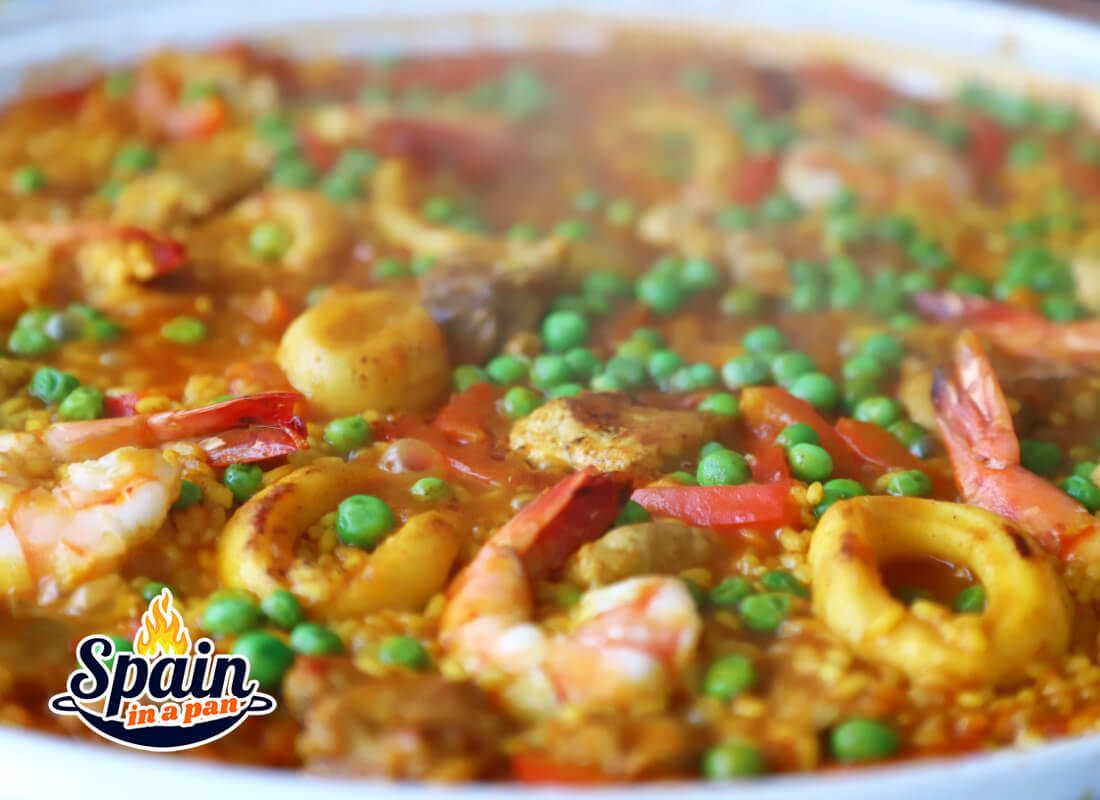 Cooking paella mixta in a electric paella pan.
Cooking paella mixta in a electric paella pan.
What You Will Need
- A paella pan for 4 servings*
- A paella burner*
- Spatula
- Meat knife
- Paring knife
- Cutting board
- Measuring beaker
- Scale
*The paella pan with burner can be replaced with an electric paella pan for indoor (or outdoor) cooking. Never use a gas burner indoors unless it has a safety sensor!!
But Is It Authentic Paella?
Well... that depends on who you ask.
If you’re talking to a Valencian purist, probably not. The original Valencian paella—Paella Valenciana—sticks to a very strict set of ingredients (typically rabbit, chicken, and sometimes snails).
And yes, Valencians take their paella very seriously. In fact, paella mixta isn’t included in the “Denominación de Origen,” which is kind of like a protected designation that guards the authenticity of traditional products. So no, this isn’t considered a “true” Valencian paella.
But honestly? That doesn't stop anyone from enjoying it. Not locals. Not tourists. Not me. And definitely not the people who gather around the pan to share it.
Still a Social Dish, Always
Paella—authentic or not—is a social dish. It’s meant to be shared, usually on weekends, often outdoors, with friends or family. My mom used to make it on Sundays, with calamari, shrimp, and chicken.
It was amazing. Just like in many Valencian households, the whole family would come together—no matter how big—to eat, laugh, and just be together.
So whether it’s “authentic” or not kind of misses the point, doesn’t it?
Where Did the Paella Mixta Recipe Come From?
No one really knows exactly where this version originated. But we do know that in regions like Alicante, Castellón, and even parts of Catalonia, seafood rice dishes have long been part of the local food culture.
In Alicante, for example, there’s Arroz a Banda and Arroz Alicantino—both beloved dishes made with seafood stock and ingredients from the coast.
So it’s not a stretch to imagine that the idea for the paella mixta recipe emerged naturally, especially with tourists loving both meat and seafood in their rice.
The Costa Blanca and Costa Dorada are full of places serving this kind of paella. And sure, it might not be the one with the “official” stamp of approval, but it’s definitely one that people enjoy.
*****
